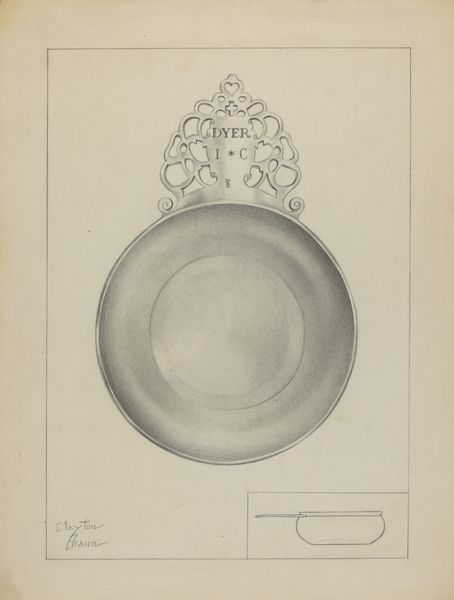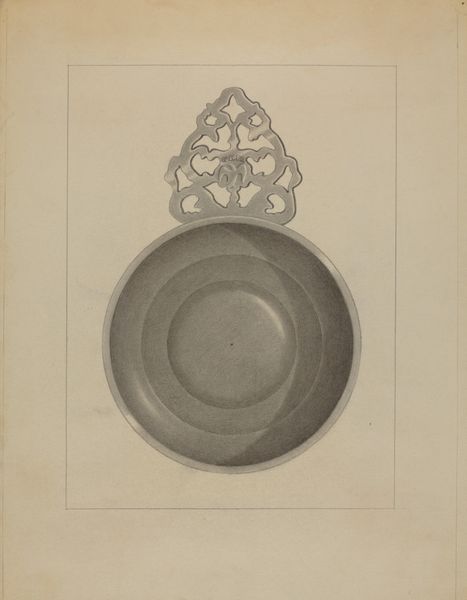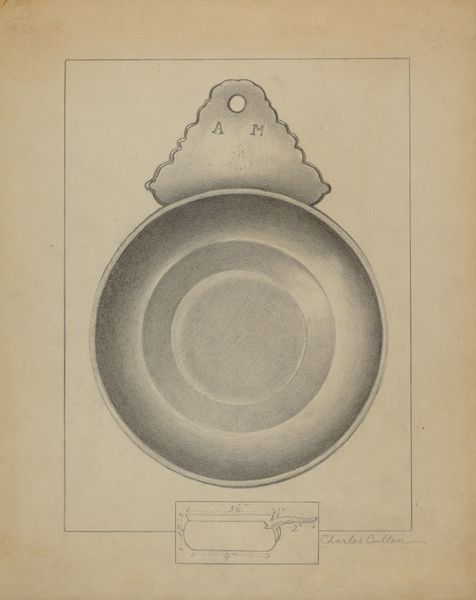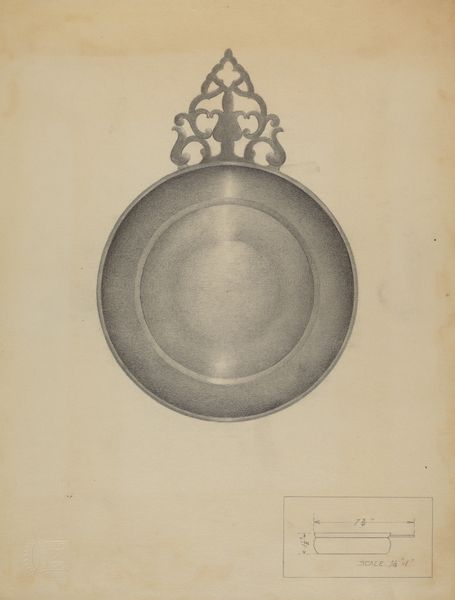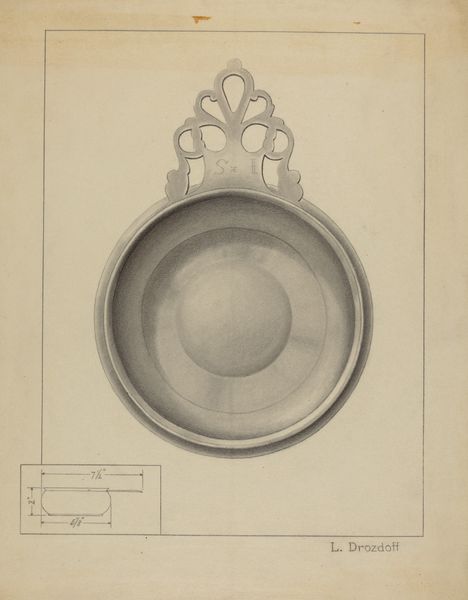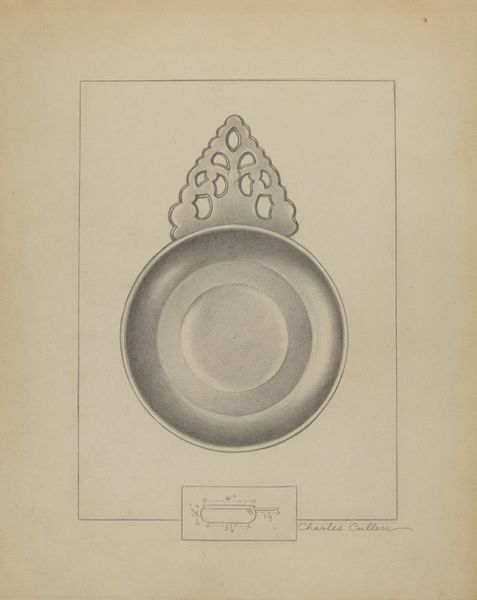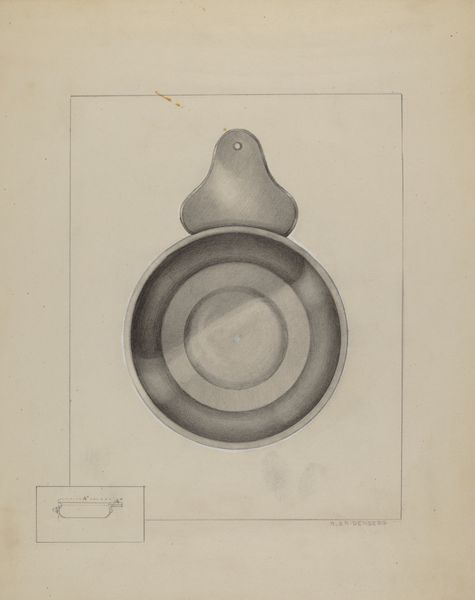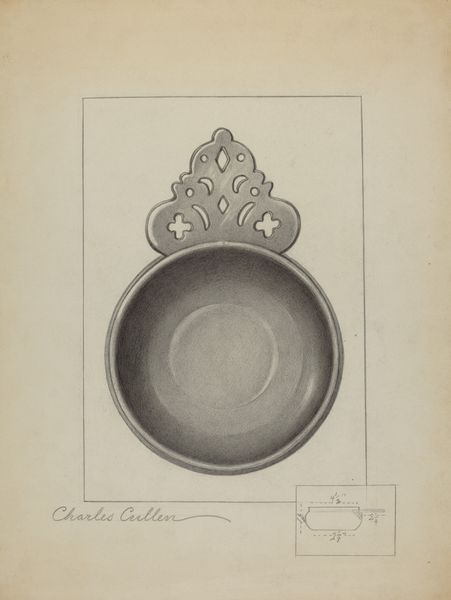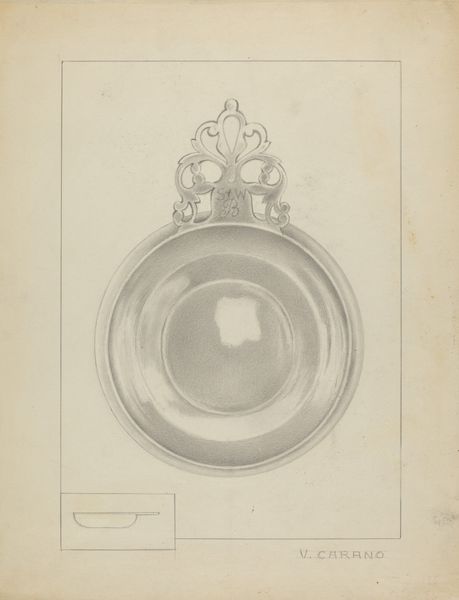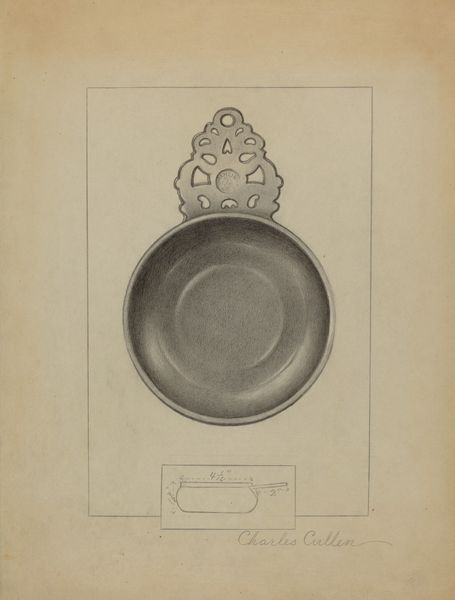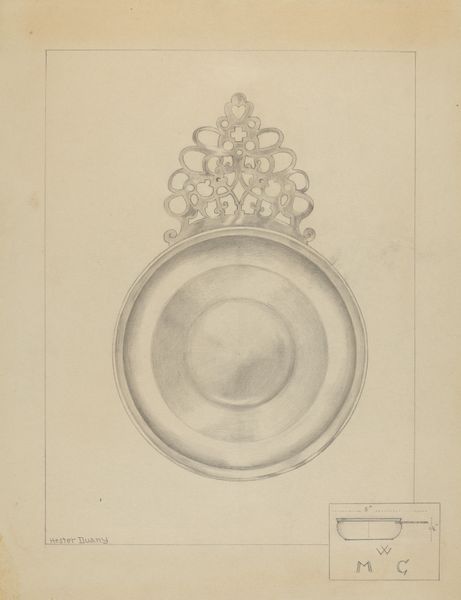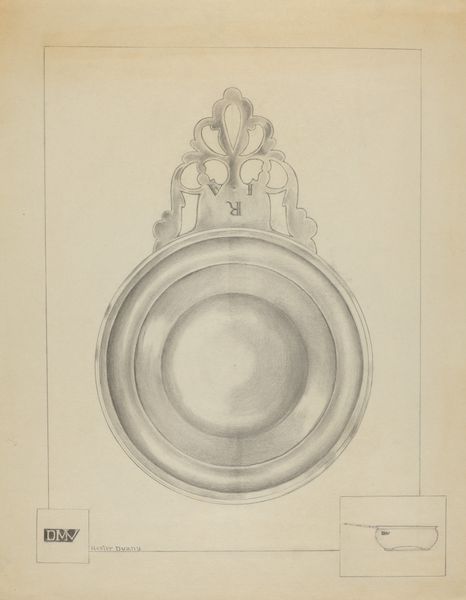
drawing, pencil
#
drawing
#
pencil
#
realism
Dimensions: overall: 28.8 x 23.1 cm (11 5/16 x 9 1/8 in.)
Copyright: National Gallery of Art: CC0 1.0
Curator: Charles Cullen's "Silver Porringer," crafted circa 1936, showcases the artist's meticulous approach through pencil on paper, exemplifying Realism. Editor: My initial impression is a sense of quiet dignity. It feels like an ode to domesticity and simplicity, almost melancholic. There is such detailed representation that I see vulnerability in this everyday object being rendered so carefully. Curator: It’s intriguing you pick up on the “melancholic,” as Realism often served social functions beyond pure aesthetics. Given the era, the Great Depression perhaps? Do you think the porringer itself speaks to social status? Editor: Absolutely, though not perhaps as obviously as, say, portraits of the wealthy. Silver hints at a certain aspiration or former privilege, especially if it’s meant for a child. Maybe even aspiration for things we think we should or must have. Does Cullen imbue a critique here or pay homage to domestic symbolism? What narratives exist when he captures it with such quietness? Curator: Those narratives become even more layered, thinking about artistic labor in that historical context. Drawing such detail, almost a technical study, in the Depression suggests an investment of time – whether that reflects personal means or WPA involvement comes to mind. Editor: Yes, the almost mechanical, exact reproduction also invites the narrative and socio-economic factors informing that, doesn’t it? It is interesting that he renders the item like an architectural rendering. The artist’s gaze, then, tells many stories. It begs questions about craft and aspiration for future promise. What do you make of that lens, considering class? Curator: The precision absolutely points to professional artistry, with ties to industry and design history perhaps? Its stark presentation, isolated on paper, detaches it from active social life. We are given pause to reconsider value, materiality. The porringer is suspended—an artifact, ready for analysis and contemplation. Editor: So true, in its stillness, Cullen opens questions far beyond domestic life and aesthetics—but of the socio-economic structures under which everyday people survive or even thrive. Curator: Right. In examining its place within broader systems, from art history to economics, hopefully our audience will pause to reflect too. Editor: I'm all for it; seeing objects this way enables people to confront critical concepts they might not think about every day.
Comments
No comments
Be the first to comment and join the conversation on the ultimate creative platform.
